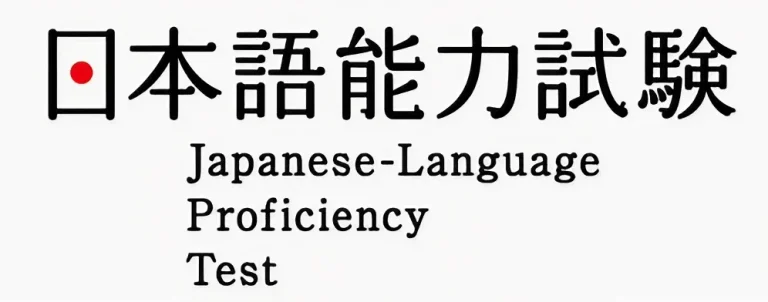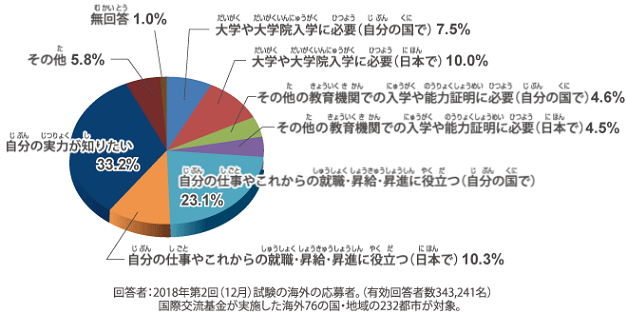JLPT N1 Practice Test
Discover the essentials of JLPT N1 on this page, designed for beginners of Japanese language proficiency.
Here, we provide a concise overview of the exam’s structure and key components, along with a practice test to help you gauge your preparation.

All About JLPT N1 with N1 Practice Test
What Japanese Language Learners Need to Know to Pass JLPT N1
- I’d like to know if JLPT N1 is a level at which I can work without problems in actual business situations.
- What kind of measures do I need to take to pass the JLPT N1?
- I want to know more about JLPT N1 so that I can pass N1!
It is held twice a year, in early July and December.
To apply for the upcoming JLPT N1 exam, please click here:

Maximize Your JLPT N1 Scoring Potential with Our Comprehensive Resources
Welcome to the JLPT N1 section of HH JapaNeeds, where we are dedicated to helping you achieve high scores in each section of the prestigious JLPT N1 exam. Our website offers an extensive array of resources specifically designed for the JLPT N1 level, ensuring that every aspect of your preparation is covered.
In our sections, you will find detailed explanations and strategies for scoring well in the JLPT N1. From language knowledge to reading and listening comprehension, our materials are tailored to help you understand the scoring system and how to excel in each part of the exam. We provide a range of practice questions and mock tests that reflect the structure and content of the actual JLPT N1, allowing you to gauge your readiness and areas for improvement.
Navigate through our sections to find tips and techniques that can boost your scores. Each resource is carefully curated to guide you in mastering the complexities of the N1 level. Whether you need in-depth explanations of grammar points, extensive vocabulary lists, or practice exercises for kanji, you’ll find it all here.
For those aiming to score above 80%, our dedicated JLPT N1 section offers everything you need for thorough preparation. Embark on your journey to JLPT N1 success with HH JapaNeeds, your partner in achieving language proficiency and academic excellence.
Take the JLPT N1 practice test now
Let’s try a JLPT N1 mock test.
Vocabulary & Reading: 110min, Listening: 60min
This practice test is slightly different from the actual number of exam questions and question format on the actual N1 test. Please purchase the latest practice exam questions to make sure. Source: Japanese-Language Proficiency Test Worldwide Official Website.
If you have any questions, ask them for free! ➡ Japanese Question Form
Kanji List for Passing JLPT N1
This is a list of kanji required to pass the JLPT N1. Learn 1,232 kanji to pass the exam.
Tips for Reading the JLPT
Why don't test takers score well in reading comprehension?
In reading comprehension, you have to read a number of sentences speedily within a limited time, understand the contents accurately, and answer the questions precisely. It is an exam that tests your overall Japanese language ability, so to speak, as it contains all kinds of elements such as vocabulary, grammar, and expressions. Here are eight tips to help you get a good score in reading comprehension.
Tip 1: "Questions that ask for the reason or content of the underlined part have a clue right before and after."
It is rare that the clue to the answer lies far from the underlined part. In most cases, the answer can be found by reading “immediately before and after”. Please read “immediately before and after” carefully.
Tip 2: "Negative questions ("Isn't it...?") If you see "A", check it.
“Isn’t it A? means “I think it’s A.” It means “I think A.” It is an expression to express one’s opinion in a modest (understated) way. I think he’s smiling, but I think he’s actually very sad. →I think he is very sad. It is in this understatement that the author’s true feelings and assertions are found. Of course, it is often involved in exam questions.
Tip 3: "When you see the adversative conjunction 'but', the sentence that follows is super important."
Why should the author dare to use “but” to change the flow of the sentence? Because there is something that must be said even if the flow of the sentence is changed, namely, the author’s argument or opinion. That’s why the sentence after “but” is super important.
Tip 4: "Look at the source first before reading. It will help you understand the theme of the text and improve your comprehension."
When you read a text, which is easier to understand, reading it without knowing its theme or reading it with knowing its theme? Of course it’s easier to understand if you know the theme. If you read the source before you read the text, you will know the general theme before you read the question. It only takes a second or two to read the source. It will make all the difference in your understanding.
Tip 5: "The purpose of reading comprehension is to accurately read the author's arguments and opinions."
The purpose of reading comprehension is exactly this. The purpose of reading comprehension is exactly this: to read the author’s arguments and opinions. This is especially important for sentences that contain sentence-final expressions such as “-should,” “-must,” “-isn’t,” “-think,” “-think/thinkable,” and “-nothing but.
Tip 6: "'~ means...'" Check for sentences that express definitions."
The definition of a word is the starting point for the writer’s speculation and subsequent logical development. For this reason, writers also pay close attention to the definitions of words. Some definitions are dictionary definitions, while others are the writer’s own definitions. Both are important, of course. They can also give you great hints when solving a problem.
Tip 7: "Whenever you see a figurative expression, check the part that explains it."
Figurative expressions are indirect expressions. Figurative expressions are indirect expressions, so there is a big possibility of misunderstanding if you interpret them based on your own image. When the test asks about the content of a figurative expression, there is always a part that explains the content before and after the expression. Make sure you grasp that part and grasp the meaning accurately.
Tip 8: "Words that appear repeatedly are keywords. Check the sentences with keywords."
Words that appear repeatedly are words that the author is always thinking about. In other words, they are keywords that are at the center of the author’s thoughts. Therefore, sentences containing keywords are often explanations of the keywords (i.e., explanations of the author’s thoughts) or the author’s arguments. That is why you should never miss them.
JLPT N1 Test Outline
日本語能力試験N1〈試験概要〉 | |
Language knowledge (letters, vocabulary, grammar), reading comprehension | 110分 |
listening comprehension | 60分 |
Refer to the JLPT official website.
- All questions are in mark-sheet format.
- The Japanese Language Proficiency Test (JLPT) is a test that measures knowledge of Japanese vocabulary and grammar, reading comprehension, and listening comprehension.
- Of the four skills, there is no part that directly measures speaking and writing skills.
How difficult is the JLPT N1?
N1, the most difficult level, can be certified as the following level according to the official website of the Japanese Language Proficiency Test.
| Guidelines for JLPT N1 Certification | |
| Understand the Japanese language used in a wide range of situations | |
| Reading |
|
| Listening | Listen to coherent conversations, news, and lectures at a natural speed in a wide range of situations, and understand the flow and content of the conversation, the relationships among characters, and the logical structure of the content in detail, as well as grasp the gist. |
Refer to the JLPT official website.
Passing Score and Pass Rate
- The score is 180 points, and the scores are distributed as follows.
JLPT N1 Passing Score (JLPT N1の合格点)
Score Classification | Score Range |
Language knowledge 言語知識(文字・語彙・文法) | 0~60 |
Reading comprehension 読解 | 0~60 |
Listening comprehension 聴解 | 0~60 |
総合得点 | 0~180 |
- The passing score is 100 points (out of 180 points).
- The passing score includes a minimum of 19 points in all parts of language knowledge, reading comprehension, and listening comprehension.
- The pass rate varies from year to year, but it is usually between 34% and 40% every year.
What is the Japanese Language Proficiency Test (JLPT)?
Overview of the JLPT
The Japanese-Language Proficiency Test (JLPT) is a language proficiency test for non-native speakers of Japanese (Japanese nationals are also eligible to take the test).
- Sponsored by: Japan Educational Exchanges and Services and The Japan Foundation
- It has been conducted since 1984.
- Can be taken in Japan and in 87 countries and regions around the world
- Date of administration: Basically July and December (twice a year)
- English name: “Japanese-Language Proficiency Test (JLPT)
Features of the JLPT exam
There are a total of five levels in this exam. There are five levels: N1, N2, N3, N4, and N5, with N1 being the highest level.
The test is divided into three parts:
1) language knowledge (characters, vocabulary, grammar),
2) reading comprehension
3) listening comprehension.
There are no written questions, all questions are mark-response type.
Why Foreigners Take the JLPT|Advantages
More than half of the people who take the JLPT do so for the following reasons: “To enter a graduate school or university when studying abroad” or “To get a job or a raise in salary.
Specifically, many people take the test for the following purposes and advantages
- To meet the requirements for admission to a Japanese university.
- To meet the requirements for employment or to show off their language skills
- To meet the requirements for salary increase or promotion in the company
- To obtain points to receive preferential treatment for “advanced foreign human resources” visas (N1 and N2 only)
- To meet the requirements for taking the Japanese national examination (N1)
- To be exempted from some subjects of the Japanese Junior High School Graduation Certificate Examination (N1, N2)
- One of the conditions for selecting nurse and care worker candidates for the EPA (Economic Partnership Agreement) (N5~N3)

Attributes of JLPT test takers
Refer to the JLPT official website
How to take the exam
If you would like to take the Japanese Language Proficiency Test in Japan, please apply online.
How to apply: After registering for MyJLPT on the JLPT homepage of the Japanese Language Proficiency Test (JESS), you need to log in to MyJLPT and apply from the “JLPT application” screen.
For details, see the website of the Japanese Language Proficiency Test.
My JLPT registration login website
How do you know the result of JLPT?
Those who took the exam in Japan: Please log in to MyJLPT to apply, or apply from your transcript application ID. You can check your JLPT results by logging in to MyJLPT.
Summary [Japanese Language Proficiency Test N1 level]
- The JLPT is taken for the purpose of studying abroad, finding a job, getting a raise in salary or promotion, obtaining a visa, etc.
- There are levels from N1 to N5, with N1 being the most difficult.
- The passing score for N1 is 100 out of 180 points.
- Pass rate for N1 is 34~40





